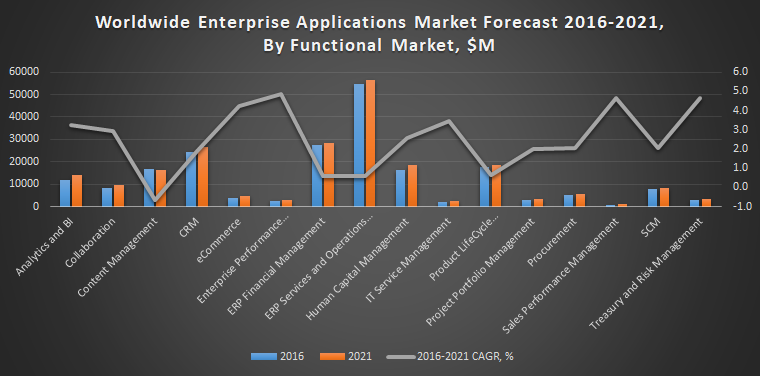2020. 3. 16. 14:09ㆍ카테고리 없음
Market OverviewThe enterprise collaboration market was valued at USD 36.24 billion in 2019, and it is expected to register a CAGR of over 10.7% during the forecast period (2020 - 2025). The BYOD strategy can greatly improve corporate data and application availability to workers on the go or off the clock. Cloud-based collaboration solutions, like those offered by Zoom, Vidyo, and Bluejeans, bring video collaboration and mobile screen sharing to the enterprise at a fraction of the cost of traditional, infrastructure-based Unified Communications (UC) deployments. Hence, more employees can collaborate effectively and frequently. The business benefits of a BYOD strategy will enable higher availability and encourage better collaboration. Business communications are becoming more intelligent and contextual, owing to emerging technologies, such as APIs integration, which are a key driver for the market.

Companies are moving toward the developer-friendly API cloud platform, which includes developer tools, such as sandbox, dashboards, and sample code. Scope of the ReportEnterprise collaboration market is currently seeing a surge in innovation, which has led to several new approaches that have real potential to become digital workplace breakthroughs. The demand for cloud-deployed enterprise collaboration solutions is increasing in organizations, due to its scalability functions. Virtual reality, data collaboration, visual collaboration tools, and artificial intelligence bots are changing the way that enterprises conduct business. By Deployment TypeOn-premiseCloud-basedBy ApplicationCommunication ToolsConferencing ToolsCoordination ToolsBy ServiceManaged ServicesProfessional ServicesBy End-user IndustryTelecommunications and ITTravel and HospitalityBFSIRetail and Consumer GoodsEducationTransportation and LogisticsHealthcareOther End-user IndustriesGeographyNorth AmericaUnited StatesCanadaEuropeUnited KingdomGermanyFranceSpainRest of EuropeAsia-PacificChinaJapanIndiaSouth KoreaRest of Asia-PacificLatin AmericaMiddle East & AfricaReport scope can be customized per your requirements. Key Market Trends Cloud-based Deployment to Increase the Market Growth. Cloud-based deployment to workload is expected to be primarily driven by the consistent growth in the data generated. Several industry verticals are dealing with a massive volume of data and data center is more suited for an organization that has to run many types of applications and complex workloads pertaining to enterprise collaboration.
Global Enterprise Collaboration Market
It enables the achievement of high productivity, with access to real-time data with all application tools. In recent years, enterprise social collaboration (ESC) solutions have been able to connect people around the world effectively. Social applications have been limited by technology and may work fine for one department, but not for another. With the advent of the cloud, the integration of social collaboration solutions is easier than ever.
Enterprise Collaboration Platforms
Majority of the SMEs (small medium enterprise) are adopting cloud deployment, as these solutions help SMEs in avoiding costs related to hardware, software, storage, and technical staff. Competitive LandscapeThe enterprise collaboration market is highly fragmented and consolidated. The top players are aiming for a large share of the market, while the numerous smaller players aim for a substantial pie of the market. This is resulting in intense rivalry and competition. Key players in the market are Microsoft Corporation, Huawei Technologies Co.
Ltd, Adobe Systems Inc., etc. Recent developments in the market are -.
May 2019 - Lenovo announced a handful of new Think Devices, such as ThinkPad, ThinkCentre, ThinkBook, and ThinkReality. The device brings to businesses a solutions-based approach, comprised of both software and hardware. It is designed to help enterprise workers use AR applications to receive assistance, reduce repair times, eliminate errors, streamline complex workflows, improve training quality, collaborate, and save money. Table Of Contents.1. INTRODUCTION.1.1 Study Deliverables.1.2 Study Assumptions.1.3 Scope of the Study.2. RESEARCH METHODOLOGY.3.
EXECUTIVE SUMMARY.4. MARKET DYNAMICS.4.1 Market Overview.4.2 Introduction to Market Drivers and Restraints.4.3 Market Drivers.4.3.1 API Integration for Greater Efficiency.4.3.2 Increase in Usage of Mobile Devices for Time Management.4.4 Market Restraints.4.4.1 Security Concerns in Data Collaboration due to Many Application Tools.4.5 Value Chain Analysis.4.6 Industry Attractiveness - Porter's Five Forces Analysis.4.6.1 Threat of New Entrants.4.6.2 Bargaining Power of Buyers/Consumers.4.6.3 Bargaining Power of Suppliers.4.6.4 Threat of Substitute Products.4.6.5 Intensity of Competitive Rivalry.5.
TECHNOLOGY SNAPSHOT.6.